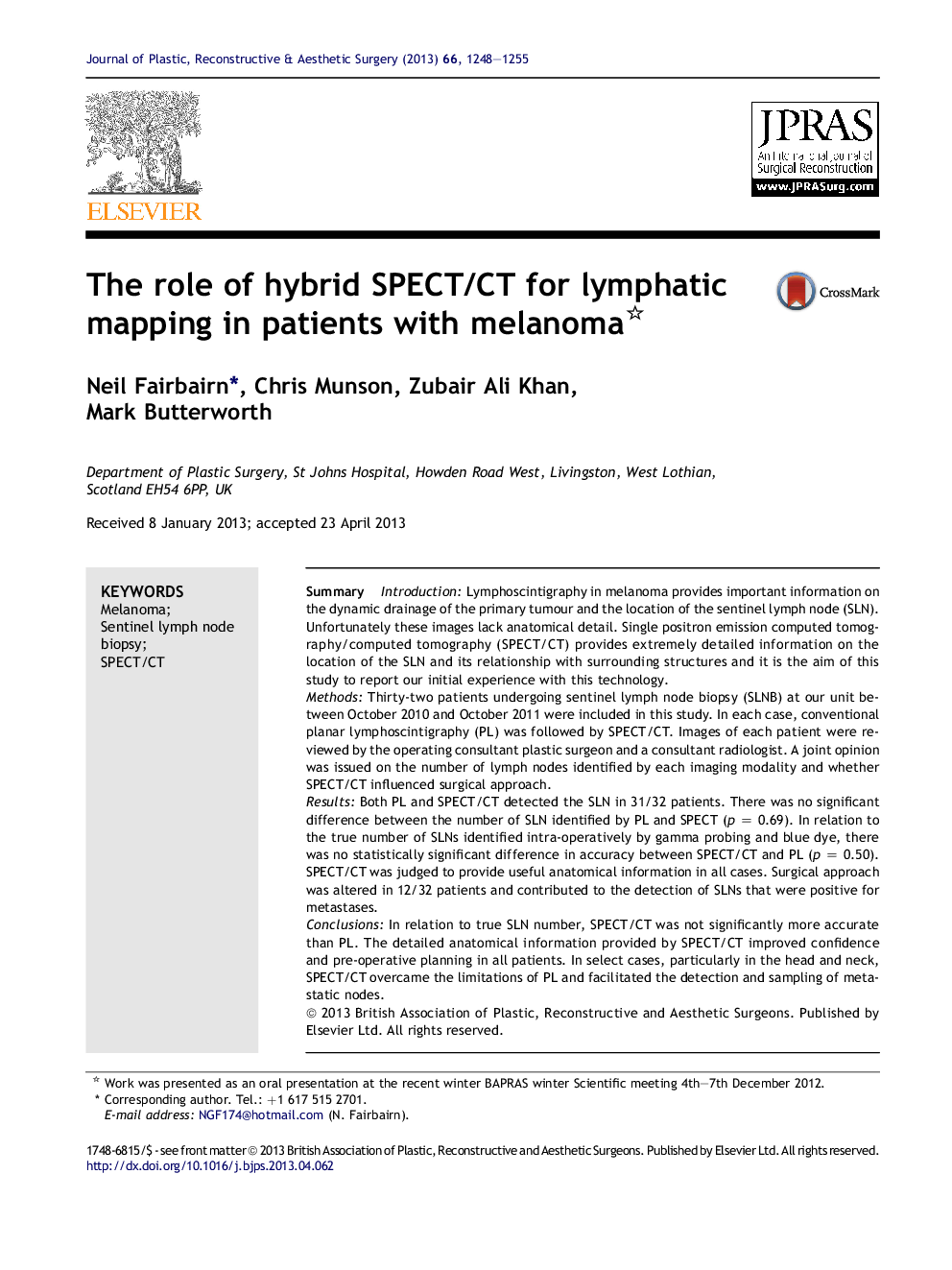| Article ID | Journal | Published Year | Pages | File Type |
|---|---|---|---|---|
| 4118377 | Journal of Plastic, Reconstructive & Aesthetic Surgery | 2013 | 8 Pages |
SummaryIntroductionLymphoscintigraphy in melanoma provides important information on the dynamic drainage of the primary tumour and the location of the sentinel lymph node (SLN). Unfortunately these images lack anatomical detail. Single positron emission computed tomography/computed tomography (SPECT/CT) provides extremely detailed information on the location of the SLN and its relationship with surrounding structures and it is the aim of this study to report our initial experience with this technology.MethodsThirty-two patients undergoing sentinel lymph node biopsy (SLNB) at our unit between October 2010 and October 2011 were included in this study. In each case, conventional planar lymphoscintigraphy (PL) was followed by SPECT/CT. Images of each patient were reviewed by the operating consultant plastic surgeon and a consultant radiologist. A joint opinion was issued on the number of lymph nodes identified by each imaging modality and whether SPECT/CT influenced surgical approach.ResultsBoth PL and SPECT/CT detected the SLN in 31/32 patients. There was no significant difference between the number of SLN identified by PL and SPECT (p = 0.69). In relation to the true number of SLNs identified intra-operatively by gamma probing and blue dye, there was no statistically significant difference in accuracy between SPECT/CT and PL (p = 0.50). SPECT/CT was judged to provide useful anatomical information in all cases. Surgical approach was altered in 12/32 patients and contributed to the detection of SLNs that were positive for metastases.ConclusionsIn relation to true SLN number, SPECT/CT was not significantly more accurate than PL. The detailed anatomical information provided by SPECT/CT improved confidence and pre-operative planning in all patients. In select cases, particularly in the head and neck, SPECT/CT overcame the limitations of PL and facilitated the detection and sampling of metastatic nodes.
